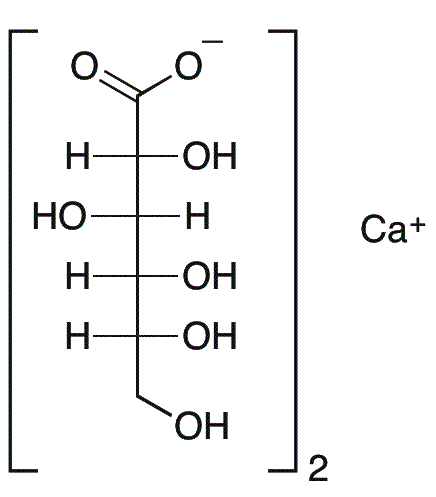Calcium D-gluconate monohydrate is widely utilized in research focused on:
- Dietary Supplements: This compound is often used in nutritional products to help maintain calcium levels in the body, especially for individuals with dietary restrictions or increased calcium needs.
- Pharmaceuticals: It serves as a calcium supplement in medical formulations, aiding in the treatment of conditions like hypocalcemia, where calcium levels in the blood are too low.
- Food Industry: Calcium D-gluconate is used as a food additive to fortify products with calcium, enhancing their nutritional value without altering taste.
- Cosmetics: In personal care products, it acts as a skin-conditioning agent, providing moisturizing benefits and improving skin texture.
- Research Applications: It is utilized in laboratory settings for various biochemical assays and studies, particularly those involving calcium metabolism and cellular functions.
General Information
Properties
Safety and Regulations
Applications
Calcium D-gluconate monohydrate is widely utilized in research focused on:
- Dietary Supplements: This compound is often used in nutritional products to help maintain calcium levels in the body, especially for individuals with dietary restrictions or increased calcium needs.
- Pharmaceuticals: It serves as a calcium supplement in medical formulations, aiding in the treatment of conditions like hypocalcemia, where calcium levels in the blood are too low.
- Food Industry: Calcium D-gluconate is used as a food additive to fortify products with calcium, enhancing their nutritional value without altering taste.
- Cosmetics: In personal care products, it acts as a skin-conditioning agent, providing moisturizing benefits and improving skin texture.
- Research Applications: It is utilized in laboratory settings for various biochemical assays and studies, particularly those involving calcium metabolism and cellular functions.
Documents
Safety Data Sheets (SDS)
The SDS provides comprehensive safety information on handling, storage, and disposal of the product.
Product Specification (PS)
The PS provides a comprehensive breakdown of the product’s properties, including chemical composition, physical state, purity, and storage requirements. It also details acceptable quality ranges and the product's intended applications.
Certificates of Analysis (COA)
Search for Certificates of Analysis (COA) by entering the products Lot Number. Lot and Batch Numbers can be found on a product’s label following the words ‘Lot’ or ‘Batch’.
*Catalog Number
*Lot Number
Certificates Of Origin (COO)
This COO confirms the country where the product was manufactured, and also details the materials and components used in it and whether it is derived from natural, synthetic, or other specific sources. This certificate may be required for customs, trade, and regulatory compliance.
*Catalog Number
*Lot Number
Safety Data Sheets (SDS)
The SDS provides comprehensive safety information on handling, storage, and disposal of the product.
DownloadProduct Specification (PS)
The PS provides a comprehensive breakdown of the product’s properties, including chemical composition, physical state, purity, and storage requirements. It also details acceptable quality ranges and the product's intended applications.
DownloadCertificates of Analysis (COA)
Search for Certificates of Analysis (COA) by entering the products Lot Number. Lot and Batch Numbers can be found on a product’s label following the words ‘Lot’ or ‘Batch’.
*Catalog Number
*Lot Number
Certificates Of Origin (COO)
This COO confirms the country where the product was manufactured, and also details the materials and components used in it and whether it is derived from natural, synthetic, or other specific sources. This certificate may be required for customs, trade, and regulatory compliance.


